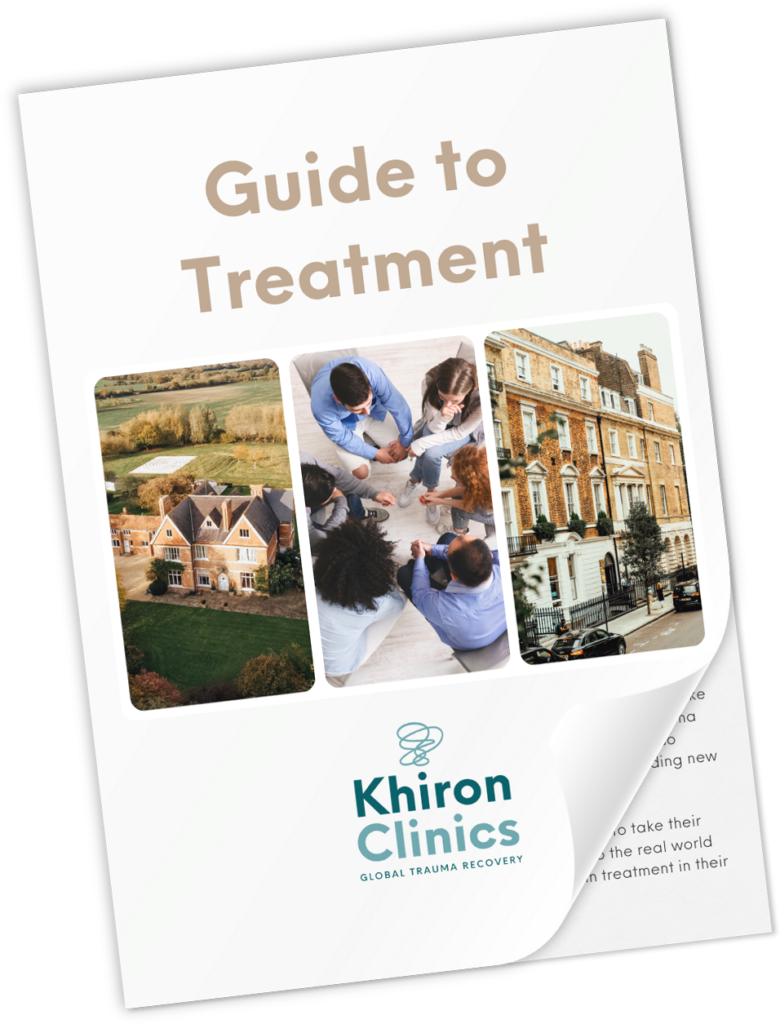Yoga is a mind-body approach which can help to heal from trauma, by supporting clients in reconnecting with and identifying their physical sensations.
Most of us are not used to stillness
Yoga can be beneficial for trauma survivors, however when working with people who have experienced severe trauma in their lives, we need to be mindful about retraumatisation. Even for an un-traumatised person, stillness and deep connection to the breath and the body are not usually a regular part of life. The connection and awareness cultivated through yoga practice can bring up discomfort at first for the average person, which could be overwhelming for the trauma survivor.
Why should yoga teachers should be Trauma-Informed
At any yoga class, each student or client walks into class with different baggage, and it is harder for some more than others to leave that baggage at the door. During a class or session, a student may find connection with parts of the body and mind from which they had previously disconnected. The degree to which this new connection and its associated physical sensations impacts an individual will vary, but the trauma-informed yoga teacher will be able to normalise any discomfort, and offer useful, relevant techniques for the individual to practice.
What does it mean to be ‘Trauma-Informed’?
To be trauma-informed does not mean that we assume everyone has been through some overwhelming, debilitating experience and that we must tip-toe around to avoid triggering them. It simply means that we understand how little we may know about what a person is going through, and erring on the side of caution so we can avoid evoking feelings of shame or causing unnecessary pressure to arise.
‘Just like we are taught to offer safe, physical alignment to everyone, not just those with injuries, being trauma-informed is a safety protocol that we should offer all students.’[1]
– Hala Khouri
Healing power
There is great healing power in a yoga teacher who can demonstrate a compassionate understanding of how we are all impacted by stress in one form or another. This teacher is one that is trauma-informed, or ‘people-informed’, and can successfully create a safe space for clients to investigate the un-investigated with both courage and self-compassion.
Trauma survivors often arrive at yoga classes/sessions with a harsh inner critic, and a sense of non-belonging. These feelings and inner voices can stand in the way of healing. The trauma-informed teacher can offer to students a ‘corrective emotional experience’[2], whereby the negative inner voices are not empowered, but instead the able, resilient self is resourced.
Principles of trauma-informed yoga
The following are some basic principles of trauma-informed yoga that an informed teacher will consider in practice:
Trauma-informed yoga is for everyone
Just like in medical settings, where practitioners take universal precautions against infection and transmission, trauma-informed yoga takes into account the prevalence of trauma in the general population and follows simple measures to make sure everyone feels safe.
Review the protocol for each new client
When a new client comes to a session, review the protocol and ground rules for the class. This includes acknowledging one’s limits, not pushing past the edge, and how to safely and respectfully step out of class if needed.
Ask for permission to touch
While it may feel instinctual to take a hands-on approach to a client to correct for posture and alignment, unsolicited physical touch can be a major trigger, especially for those who have experienced a relevant trauma. To execute safety and respect, and to avoid retraumatisation, the trauma-informed teacher will follow a safety protocol, such as making eye contact with clients and asking for permission to make physical contact, and communicate that ‘no’ is a perfectly acceptable response.
It’s OK to say ‘No’
Yoga is a process of exploration and discovery, yet everyone, regardless of their degree of traumatic impact, moves at their own pace throughout this process. Those who have been traumatised are often highly emotionally vulnerable, and may be compliant in order to be liked and accepted. Teachers should try to instil in students a confidence in their ability to say ‘no’ if they feel uncomfortable or unsure about something in class, and assure to clients that their right to say ‘no’ will be respected.
Trauma-informed teachers make themselves available and open to questions and concerns
Students and clients can find some peace of mind and a sense of security in knowing that they can come to the teacher with questions and concerns regarding the practice and their relation to it. Those of us who have been impacted by trauma may find it difficult to speak up and express concerns, so it should be made clear by the teacher that this is not just acceptable, but actually welcome.
Eyes open or closed is an option
Clients are offered the option to keep their eyes open if preferred. For some, closing one’s eyes can evoke traumatic memories or make them feel claustrophobic. If a client prefers to keep their eyes open during an exercise, an alternative to closed eyes could be offered, such as keeping one’s gaze at a fixed point.
Knowing that one has a choice in this is reassuring and instils a sense of safety, which is integral to healing.
Mindful use of imagery
Imagery is a powerful tool in many practices, one that can encourage deep relaxation and insightful exploration. Yet imagery often comes with a strong emotional charge, so it’s use should be met with mindful consideration by the trauma-informed teacher.
Results are not assumed
A trauma-informed teacher won’t assume that a pose will have a specific effect on a student, even though that effect is felt by the teacher and even other students. If a teacher claims that a particular pose ‘balances the breath’, but a student does not feel or achieve that balance, they may come to believe that they are doing something wrong or ‘failing’, which can have a negative psychological impact.
Non-competitiveness
In a trauma-informed yoga session, or any yoga session for that matter, there should be no sense of competition. As mentioned earlier, yoga involves a personal journey and respects that every individual moves at their own pace. Praise and favouritism should be avoided, as they can make others feel less able, and adds unnecessary pressure to the praised individual.
Healing from trauma
Trauma-Informed Yoga is one part of a multi-pronged approach to healing. It is one that takes a mind-body, ‘bottom-up’ approach to therapy, promoting self-regulation and a wider window of tolerance of emotional and physical distress.
Yoga is not, and should not be, seen as a stand-alone therapy for trauma, but rather as a complementary therapy alongside other clinically-proven modalities, like Eye Movement Desensitisation and Reprocessing (EMDR) and ‘top-down’ approaches like traditional, talk-based cognitive psychotherapies.
If you have a client, or know of someone who is struggling and could benefit from participating in treatment modalities such as trauma informed yoga, reach out to us at Khiron Clinics. We believe that we can improve therapeutic outcomes and avoid misdiagnosis by providing an effective residential program and out-patient therapies addressing underlying psychological trauma. Allow us to help you find the path to realistic, long lasting recovery. For information, call us today. UK: 020 3811 2575 (24 hours). USA: (866) 801 6184 (24 hours).
References
[1] Khouri, H., 2018. Trauma Informed Yoga Is People Informed Yoga — Off The Mat Into The World. [online] Off the Mat Into the World. Available at: <https://www.offthematintotheworld.org/blog/2018/12/15/trauma-informed-yoga-is-people-informed-yoga> [Accessed 3 September 2020].
[2] Molnos, A. (1998): A psychotherapist’s harvest



